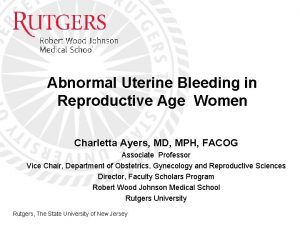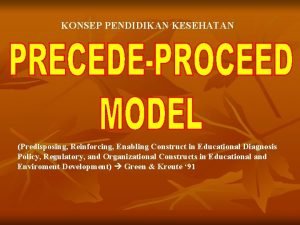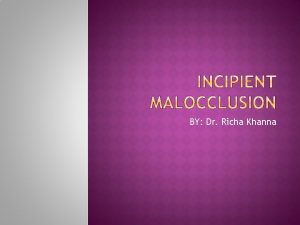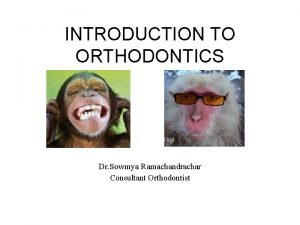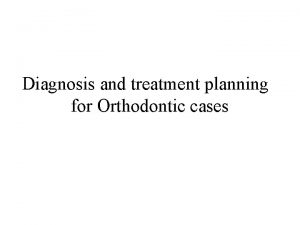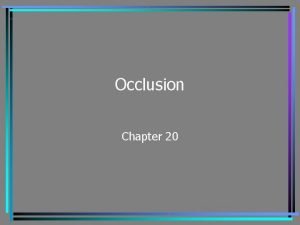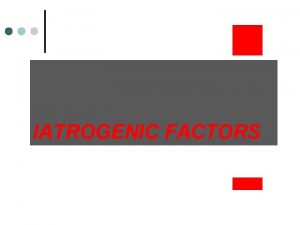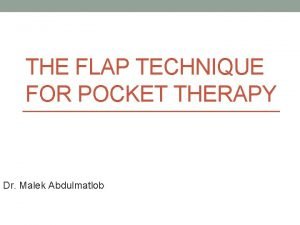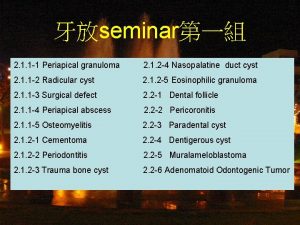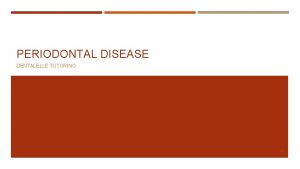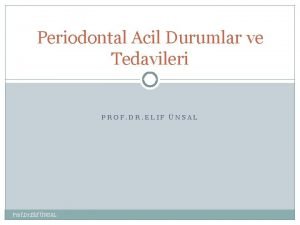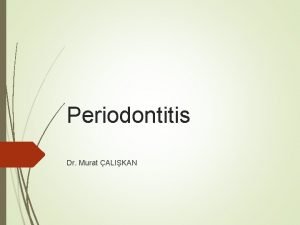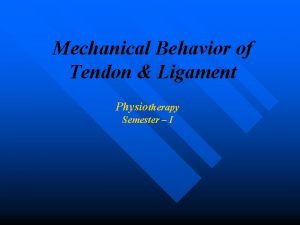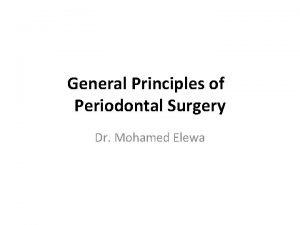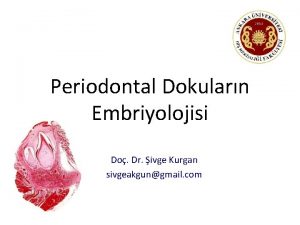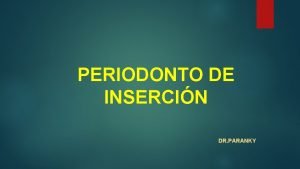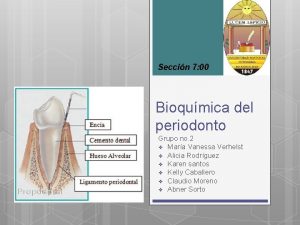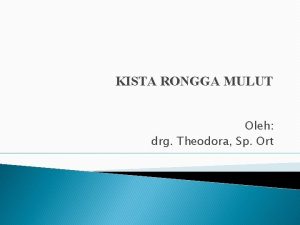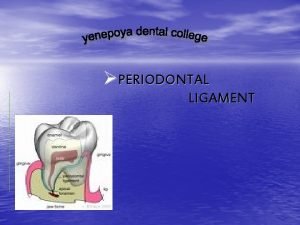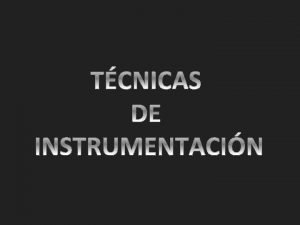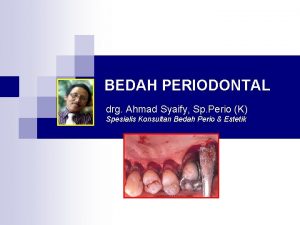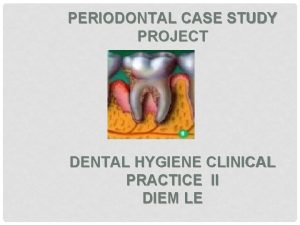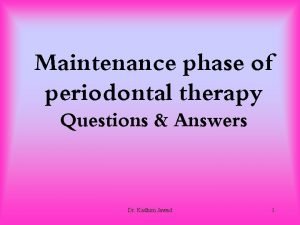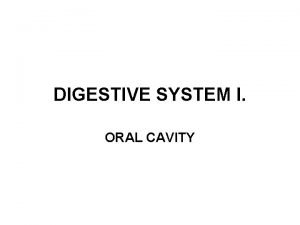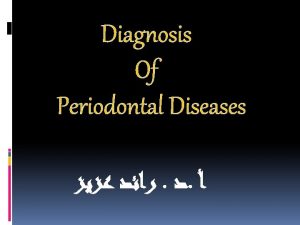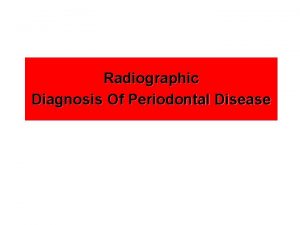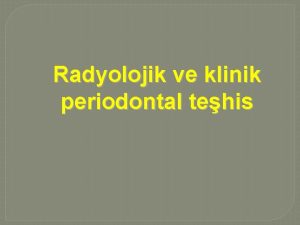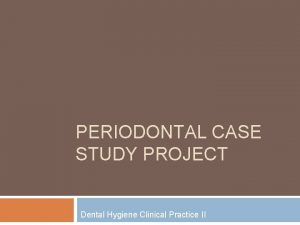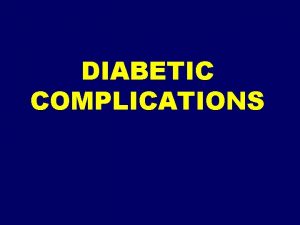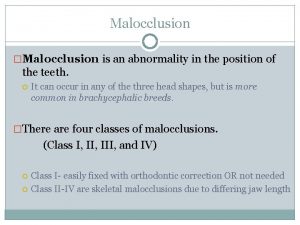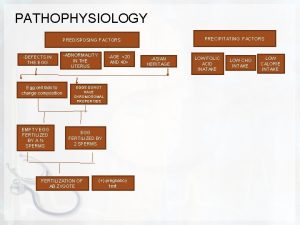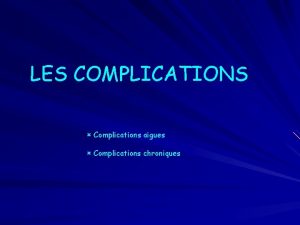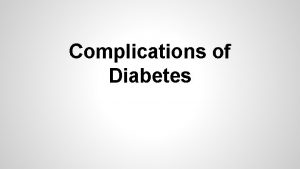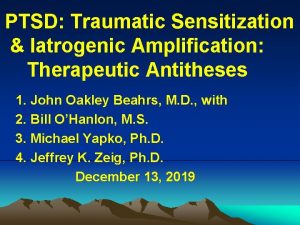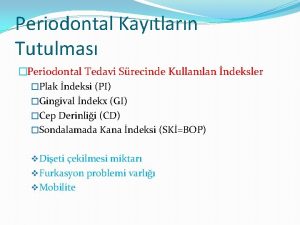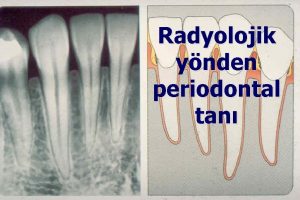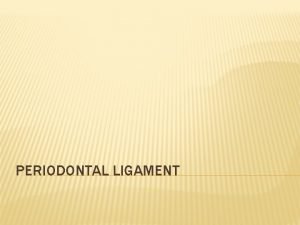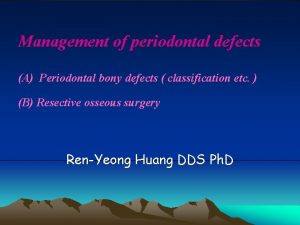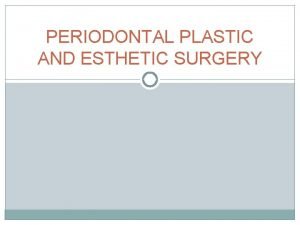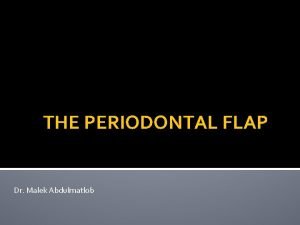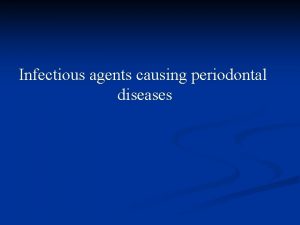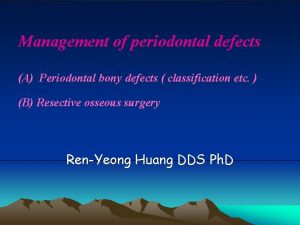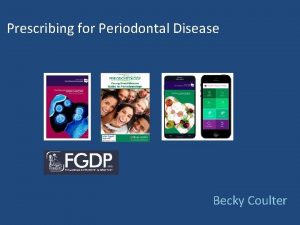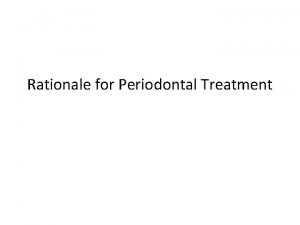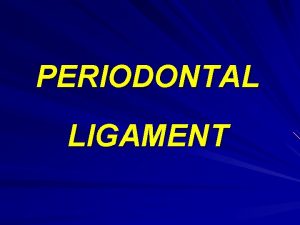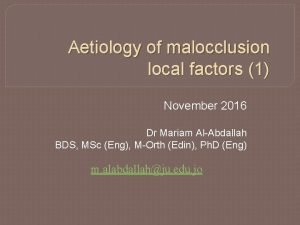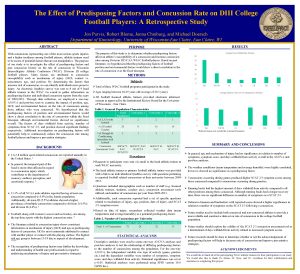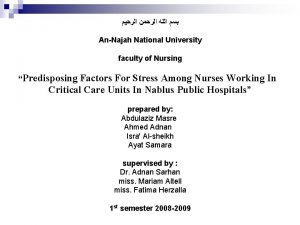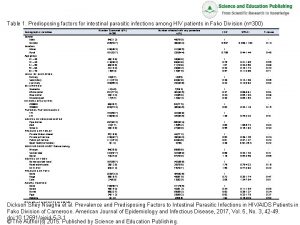OTHER PREDISPOSING FACTORS latrogenic Factors Malocclusion Periodontal Complications

































- Slides: 33

OTHER PREDISPOSING FACTORS latrogenic Factors Ø Malocclusion Ø Periodontal Complications Associated with Orthodontic Therapy Ø Extraction of Impacted Third Molars Ø Habits and Self-Inflicted Injuries Ø Tobacco Use Ø Radiation Therapy Ø

latrogenic Factors Ø Inadequate dental procedures that contribute to the deterioration of the periodontal tissues are referred to as iatrogenic factors.

Characteristics of dental restorations and removable partial dentures important to the maintenance of periodontal health: the location of the gingival margin for the restoration, the space between the margin of the restoration and the unprepared tooth, the contour of restorations, the occlusion, materials used in the restoration, the restorative procedure itself, the design of the removable partial denture.

Margins of Restorations. Overhanging margins of dental restorations contribute to the development of periodontal disease by 1) changing the ecologic balance of the gingival sulcus to an area that favors the growth of disease-associated organisms (predominately gram negative anaerobic species) at the expense of the health associated organisms (predominately gram-positive facultative species). 2) inhibiting the patient's access to remove accumulated plaque.

Overhang corrected

Frequency of overhanging margins of proximal restorations 16. 5% to 75%. A highly significant statistical relationship has been reported between marginal defects and reduced bone height.

Subgingival margins are associated with large amounts of plaque, more severe gingivitis, and deeper pockets. Even high-quality restorations, if placed subgingivally, will increase plaque accumulation, gingival Inflammation. Margins placed at the level of the gingival crest induce less severe inflammation, Supragingival margins are associated with a degree of periodontal health similar to that seen with non-restored interproximal surfaces.

Roughness in the subgingival area is considered to be a major contributing factor to plaque build-up and subsequent gingival inflammation.

After cementation, luting material prevents approximation of the crown margin and the finishing line, leaving part of the prepared tooth uncovered

Craters have formed after dissolution and disintegration of the luting material.

Polished gold alloy

Overcontoured crowns and restorations tend to accumulate plaque and possibly prevent the self-cleaning mechanisms of the adjacent cheek, lips, and tongue. Restorations that fail to reestablish adequate interproximal embrasure spaces are associated with papillary inflammation. Undercontoured crowns that lack a protective height of contour may not be as detrimental during mastication as once thought.

Inflamed marginal and papillary gingiva adjacent to an overcontoured porcelain-fused to metal crown on the maxillary left central.

Restorative Materials In general, restorative materials are not in themselves injurious to the periodontal tissues. One exception to this may be self-curing acrylics.

Although surface textures of restorative materials differ in their capacity to retain plaque, all can be adequately cleaned if they are polished and ccessible to methods of oral hygiene.

Food impaction forceful wedging of food into the periodontium by occlusal forces. Cusps that tend to forcibly wedge food into interproximal embrasures are known as plunger cusps. 1) The interproximal plunger cusp effect may be observed when missing teeth are not replaced and the relationship between proximal contacts of adjacent teeth is altered. 2) As the teeth wear down, their originally convex proximal surfaces become flattened and the wedging effect of the opposing cusp is exaggerated.

mandibular first molar is extracted mesial drifting and tilting of the mandibular second and third molars extrusion of the maxillary first molar As the mandibular second molar tips mesially, its distal cusps extrude and act as plungers. The distal cusps of the mandibular second molar wedge between the maxillary first and second molars and open the contact by deflecting the maxillary second molar distally. Subsequently, food impaction may occur and be accompanied by gingival inflammation with eventual loss of the interproximal bone between the maxillary first and second molars.

Design of Removable Partial Dentures Partial denture results in increase in mobility of the abutment teeth, gingival inflammation, and periodontal pocket formation. This is because partial dentures favor the accumulation of plaque, particularly if they cover the gingival tissue.

Malocclusion Positive correlation between crowding and periodontal disease Uneven marginal ridges of contiguous posterior teeth have been found to have a low correlation with pocket depth, loss of attachment, plaque, calculus, and gingival inflammation. Prominent root in the arch frequently exhibit recession.

Failure to replace missing posterior teeth may have adverse consequences on the periodontal support for the remaining teeth

Mouth breathing may be observed in association with a habit of tongue thrusting and an anterior open bite. Marginal and papillary gingivitis is frequently encountered in the maxillary anterior sextant in cases involving an anterior open bite with mouth breathing.

Periodontal Complications Associated with Orthodontic Therapy

Tissue Response to Excessive Orthodontic Forces Excessive force may produce necrosis of the periodontal ligament and adjacent alveolar bone. Excessive orthodontic forces also increase the risk of apical root resorption.

Excessive orthodontic forces increase the risk of apical root resorption.

It has been reported that the dentoalveolar gingival fibers that are located within the marginal and attached gingiva are stretched when teeth are rotated during orthodontic therapy. [36] Surgical severing or removal of these gingival fibers in combination with a brief period of retention may reduce the incidence of relapse after orthodontic treatment intended to realign rotated teeth.

The use of elastics to close a diastema may result in severe attachment loss with possible tooth loss as the elastics migrate apically along the root.

The use of a concentrated mouthwash caused a chemi cal burn with accompanying necrosis and sloughing of the marginal gingiva.

Habits and Self-Inflicted Injuries A maxillary canine that illustrates gingival recession due to self-inflicted trauma by the patient's fingernail.

Exposure of impacted teeth Surgical exposure of impacted teeth and orthodontic-assisted eruption has the potential to compromise the periodontal attachment on adjacent teeth. However, the majority of impacted teeth that are surgically exposed and aided in their eruption by orthodontic treatment subsequently exhibited >90% of their attachment intact Radiograph of an impacted maxillary canine that required surgically exposed and orthodontic assistance to erupt.

Removal of impacted teeth Panoramic radiograph illustrating a mesial impacted lower left third molar with a widened follicle and no apparent bone on the distal interproximal surface of the second molar. Alternatively, the lower right third molar is vertically impacted and exhibits interproximal bone between distal to the second molar and the mesial surface of the third molar.

This iatrogenic effect is unrelated to flap design and appears to occur more often when third molars are extracted in individuals older than 25 years. Other factors that appear to play a role in the development of lesions on the distal surface of second molars, particularly in those older than 25 years, include the presence of visible plaque, bleeding on probing, root resorption in the contact area between second and third molars, presence of a pathologically widened follicle, inclination of the third molar, and close proximity of the third molar to the second molar

Tobacco Use The odds ratio for a moderate smoker (15 to 30 pack years) to have periodontal disease is 2. 77 times that of a nonsmoker, and a heavy smoker (>_30 pack years) is 4. 75 times more likely to have periodontal disease than a nonsmoker. Pack years can be defined as the number of packs of cigarettes smoked per day multiplied by the number of years that an individual smoked.

Radiation Therapy Radiation therapy has cytotoxic effects on both normal cells and malignant cells. A typical total dose of radiation for head and neck tumors is in the range of 5000 to 8000 centi. Grays (c. Gy = 1 rad). Radiation treatment induces an obliterative endarteritis that results in soft tissue ischemia and fibrosis while irradiated bone becomes hypovascular and hypoxic. Xerostomia, dermatitis and mucositis, muscle fibrosis and trismus, periodontal attachment loss and tooth loss
 Uterine bleeding
Uterine bleeding Predisposing enabling reinforcing adalah
Predisposing enabling reinforcing adalah Early mesial shift
Early mesial shift Trauma teeth
Trauma teeth Orthodontic cases and treatment plan
Orthodontic cases and treatment plan Linguoversion definition
Linguoversion definition Iatrogenic factors in periodontal disease
Iatrogenic factors in periodontal disease Types of position
Types of position Vertical incision in periodontal flap
Vertical incision in periodontal flap Non corticated
Non corticated Politür nedir
Politür nedir Periodontal disease
Periodontal disease Nug tedavisi
Nug tedavisi Surgical phase periodontal therapy
Surgical phase periodontal therapy Deskuamatif gingivitis
Deskuamatif gingivitis Stress strain curve physiotherapy
Stress strain curve physiotherapy Ligamento periodontal
Ligamento periodontal Principles of periodontal surgery
Principles of periodontal surgery Sement dokusu
Sement dokusu Ligamento periodontal
Ligamento periodontal Ligamento periodontal
Ligamento periodontal Lamina dura radiografi
Lamina dura radiografi Periodontal ligament meaning
Periodontal ligament meaning Biopulpectomía y necropulpectomía
Biopulpectomía y necropulpectomía Enap periodontal
Enap periodontal Dental case
Dental case Maintenance phase of periodontal therapy
Maintenance phase of periodontal therapy Tractus angularis
Tractus angularis Diagnosis of periodontal disease
Diagnosis of periodontal disease Gracey curette classification
Gracey curette classification Periodontal abscess
Periodontal abscess Glickman's concept
Glickman's concept Who sondu nedir
Who sondu nedir Periodontal case study
Periodontal case study
